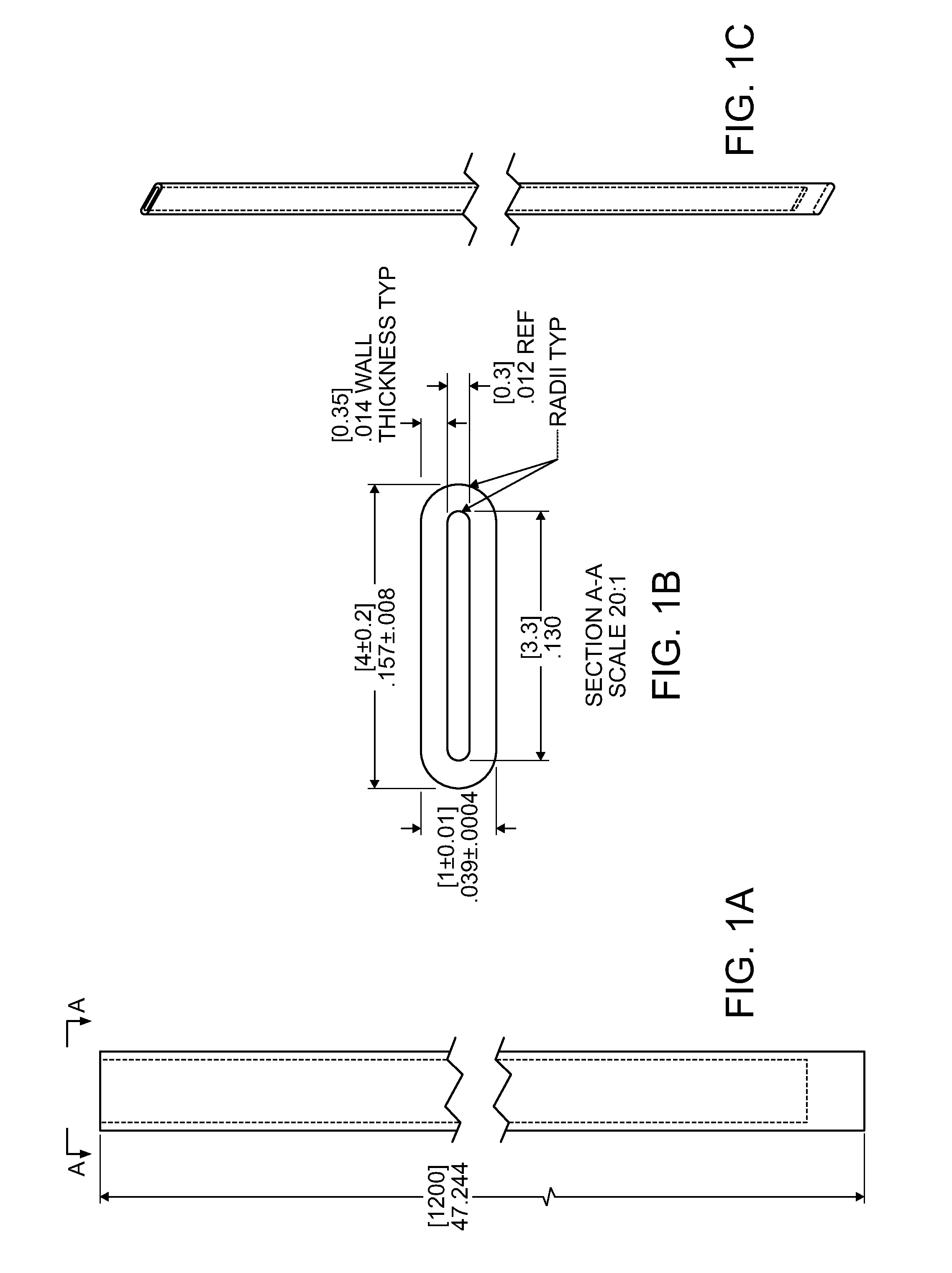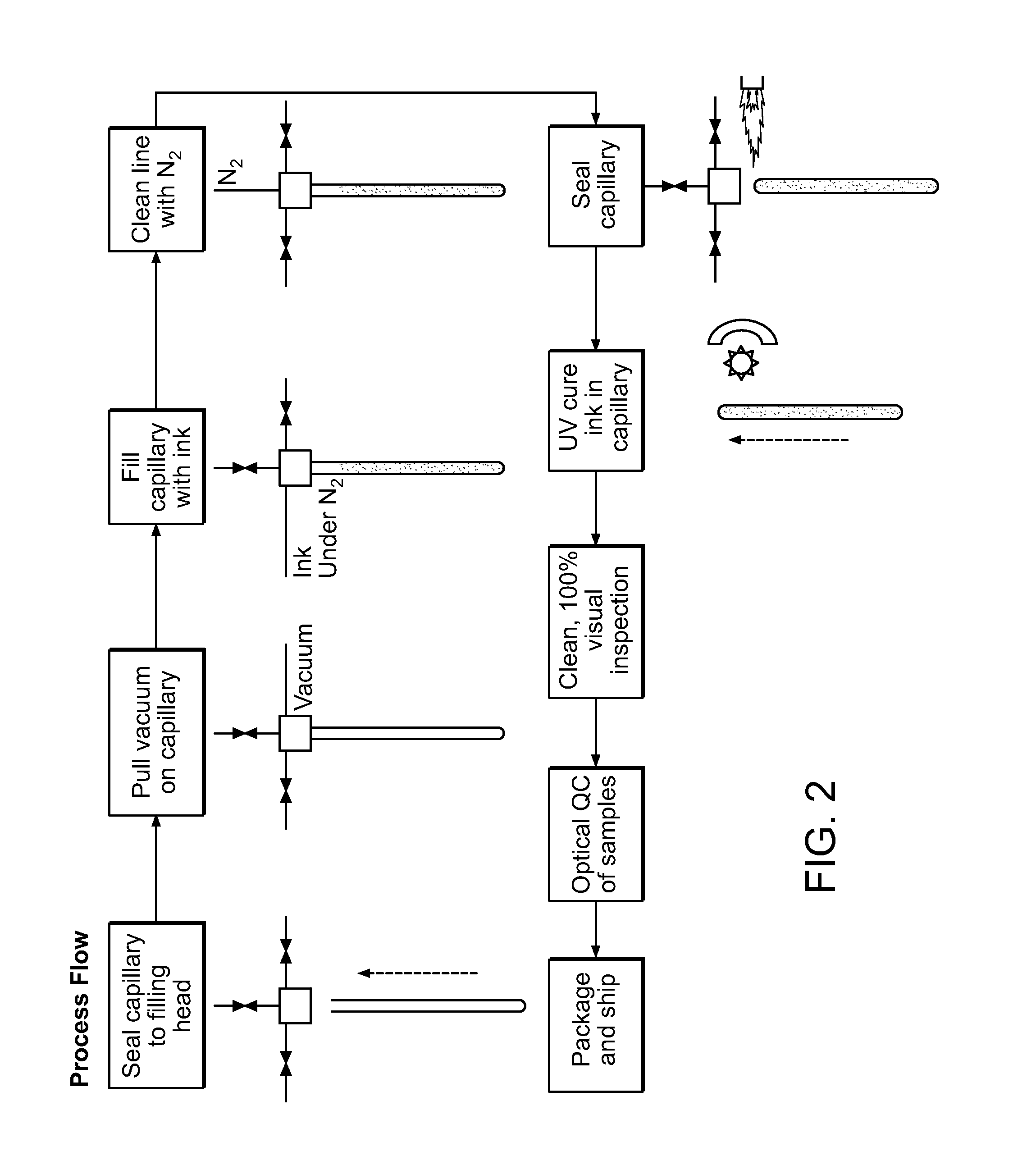Stress-resistant component for use with quantum dots
a quantum dots and stress-resistant technology, applied in the direction of manufacturing tools, lighting and heating apparatuses, instruments, etc., can solve the problems of increasing power consumption, increasing complexity, and poor color and directionality of led light, so as to reduce optical performance, resist or inhibit cracking, and improve the effect of light production
- Summary
- Abstract
- Description
- Claims
- Application Information
AI Technical Summary
Benefits of technology
Problems solved by technology
Method used
Image
Examples
example i
Preparation of Semiconductor Nanocrystals Capable of Emitting Red Light
[0125]Synthesis of CdSe Seed Cores:
[0126]262.5 mmol of cadmium acetate was dissolved in 3.826 mol of tri-n-octylphosphine at 100° C. in a 3 L 3-neck round-bottom flask and then dried and degassed for one hour. 4.655 mol of trioctylphosphine oxide and 599.16 mmol of octadecylphosphonic acid were added to a 5 L stainless steel reactor and dried and degassed at 140° C. for one hour. After degassing, the Cd solution was added to the reactor containing the oxide / acid and the mixture was heated to 310° C. under nitrogen. Once the temperature reached 310° C., the heating mantle is removed from the reactor and 731 mL of 1.5 M diisobutylphosphine selenide (DIBP-Se) (900.2 mmol Se) in 1-Dodecyl-2-pyrrolidinone (NDP) was then rapidly injected. The reactor is then immediately submerged in partially frozen (via liquid nitrogen) squalane bath rapidly reducing the temperature of the reaction to below 100° C. The first absorptio...
example ii
Preparation of Semiconductor Nanocrystals Capable of Emitting Green Light
[0131]Synthesis of CdSe Cores:
[0132]262.5 mmol of cadmium acetate was dissolved in 3.826 mol of tri-n-octylphosphine at 100° C. in a 3 L 3-neck round-bottom flask and then dried and degassed for one hour. 4.655 mol of trioctylphosphine oxide and 599.16 mmol of octadecylphosphonic acid were added to a 5 L stainless steel reactor and dried and degassed at 140° C. for one hour. After degassing, the Cd solution was added to the reactor containing the oxide / acid and the mixture was heated to 310° C. under nitrogen. Once the temperature reached 310° C., the heating mantle was removed from the reactor and 731 mL of 1.5 M diisobutylphosphine selenide (DIBP-Se) (900.2 mmol Se) in 1-Dodecyl-2-pyrrolidinone (NDP) was then rapidly injected. The reactor was then immediately submerged in a partially frozen (via liquid nitrogen) squalane bath rapidly reducing the temperature of the reaction to below 100° C. The first absorpti...
example iii
Preparation of Polymerizable Formulation Including Quantum Dots
[0135]A polymerizable formulation including quantum dots was prepared as follows:[0136]A clean, dry Schlenk flask equipped with a magnetic stir bar and rubber septum was charged with 57.75 mL lauryl methacrylate (LMA) (Aldrich Chemical, 96%), 9.93 mL ethylene glycol diacrylate (EGDMA) as well as any additive(s) indicated for the particular example The solution was inerted using a vacuum manifold and degassed in a standard protocol by freeze-pump-thawing the mixture three times successively using liquid nitrogen. The thawed solution is finally placed under nitrogen and labeled “monomer solution”.[0137]Separately, a clean, dry Schlenk flask equipped with a magnetic stir bar and rubber septum was charged with 6.884 g treated fumed silica (TS-720, Cabot Corp), 103.1 mg titanium dioxide (R902+, DuPont Corp.) and inerted under nitrogen. To this is added 69 mL toluene (dry and oxygen free). The mixture is placed in an ultrasoni...
PUM
| Property | Measurement | Unit |
|---|---|---|
| length | aaaaa | aaaaa |
| length | aaaaa | aaaaa |
| length | aaaaa | aaaaa |
Abstract
Description
Claims
Application Information
 Login to View More
Login to View More - R&D
- Intellectual Property
- Life Sciences
- Materials
- Tech Scout
- Unparalleled Data Quality
- Higher Quality Content
- 60% Fewer Hallucinations
Browse by: Latest US Patents, China's latest patents, Technical Efficacy Thesaurus, Application Domain, Technology Topic, Popular Technical Reports.
© 2025 PatSnap. All rights reserved.Legal|Privacy policy|Modern Slavery Act Transparency Statement|Sitemap|About US| Contact US: help@patsnap.com



